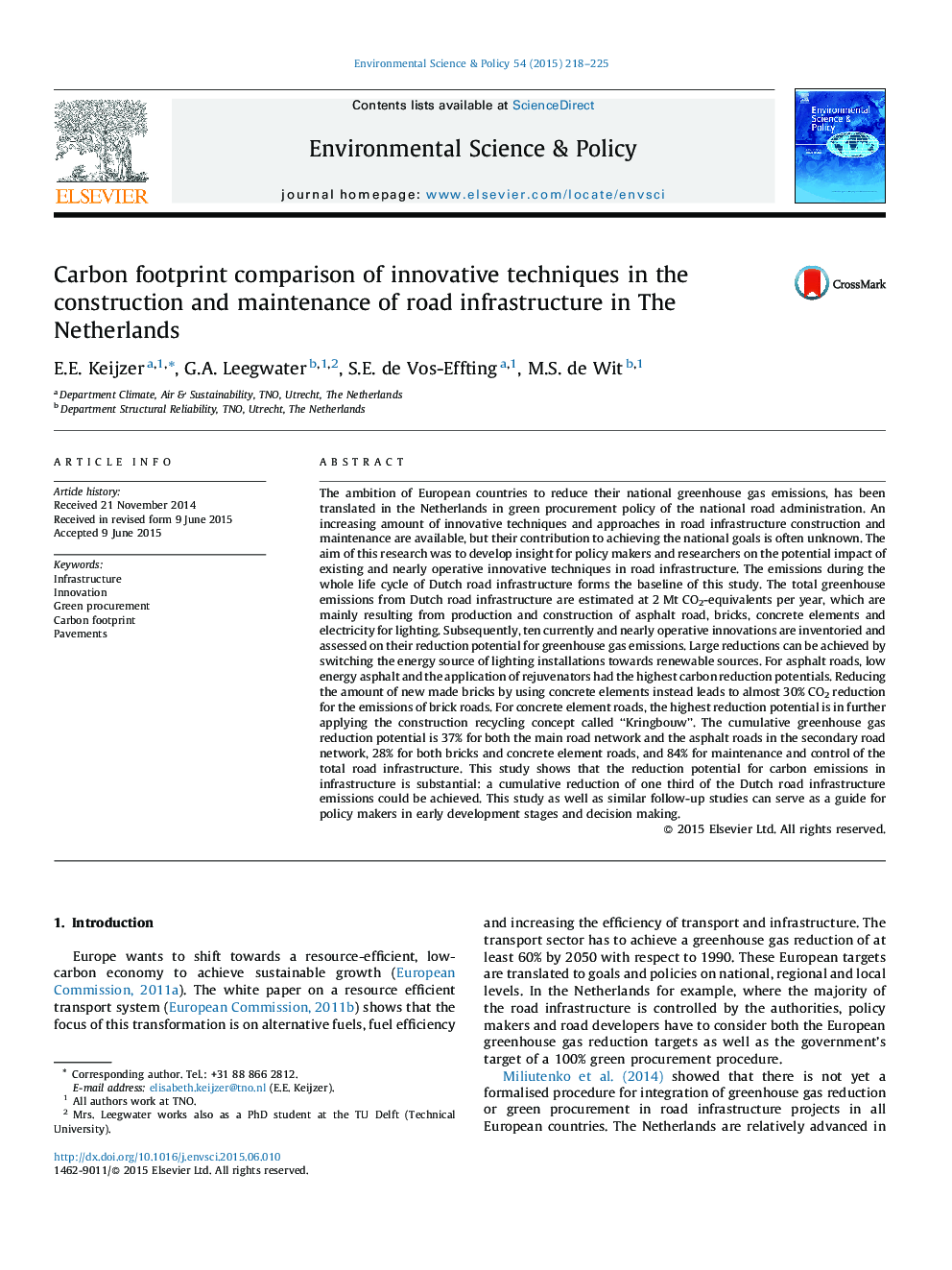| Article ID | Journal | Published Year | Pages | File Type |
|---|---|---|---|---|
| 7467270 | Environmental Science & Policy | 2015 | 8 Pages |
Abstract
The ambition of European countries to reduce their national greenhouse gas emissions, has been translated in the Netherlands in green procurement policy of the national road administration. An increasing amount of innovative techniques and approaches in road infrastructure construction and maintenance are available, but their contribution to achieving the national goals is often unknown. The aim of this research was to develop insight for policy makers and researchers on the potential impact of existing and nearly operative innovative techniques in road infrastructure. The emissions during the whole life cycle of Dutch road infrastructure forms the baseline of this study. The total greenhouse emissions from Dutch road infrastructure are estimated at 2Â Mt CO2-equivalents per year, which are mainly resulting from production and construction of asphalt road, bricks, concrete elements and electricity for lighting. Subsequently, ten currently and nearly operative innovations are inventoried and assessed on their reduction potential for greenhouse gas emissions. Large reductions can be achieved by switching the energy source of lighting installations towards renewable sources. For asphalt roads, low energy asphalt and the application of rejuvenators had the highest carbon reduction potentials. Reducing the amount of new made bricks by using concrete elements instead leads to almost 30% CO2 reduction for the emissions of brick roads. For concrete element roads, the highest reduction potential is in further applying the construction recycling concept called “Kringbouw”. The cumulative greenhouse gas reduction potential is 37% for both the main road network and the asphalt roads in the secondary road network, 28% for both bricks and concrete element roads, and 84% for maintenance and control of the total road infrastructure. This study shows that the reduction potential for carbon emissions in infrastructure is substantial: a cumulative reduction of one third of the Dutch road infrastructure emissions could be achieved. This study as well as similar follow-up studies can serve as a guide for policy makers in early development stages and decision making.
Related Topics
Physical Sciences and Engineering
Energy
Renewable Energy, Sustainability and the Environment
Authors
E.E. Keijzer, G.A. Leegwater, S.E. de Vos-Effting, M.S. de Wit,
